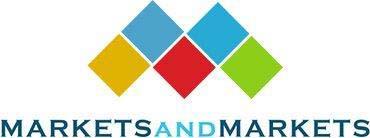The global gelatin market, estimated at USD 4.0 billion in 2024, is projected to grow at a compound annual growth rate (CAGR) of 6.9%, reaching USD 5.6 billion by 2029. This growth is largely driven by the increasing demand for pharmaceutical-grade gelatin, which has wide-ranging applications across industries such as food and beverages, medicine, and cosmetics.
Pharmaceutical Grade Gelatin: A Key Driver
Pharmaceutical-grade gelatin is one of the primary factors propelling the market’s growth. Gelatin is a collagen-derived protein that plays a crucial role in the pharmaceutical industry, particularly in the production of capsules and tablets. Companies like Tessenderlo Group and Gelita AG are investing heavily in research and development (R&D) to enhance their product offerings and maintain a competitive edge. A notable development in this area was Rousselot’s launch of Quali-Pure HGP 2000 in May 2022, an endotoxin-controlled gelatin designed for vaccines and wound healing applications. Similarly, in 2021, Rousselot expanded its pharmaceutical portfolio with X-Pure GelDAT, a purified, pharmaceutical-grade gelatin.
The versatility of gelatin is another reason for its market expansion. It acts as a thickening, stabilizing, and gelling agent in the food and beverage industry, while also being used for its film-forming and moisturizing properties in cosmetics. Technological advancements in gelatin production methods and the development of alternative gelatins are further boosting market growth, as consumers increasingly seek dietary options and ethically sourced ingredients.
How have changing lifestyles and food habits contributed to the gelatin market’s expansion?
A significant opportunity for the gelatin industry lies in changing lifestyles and food habits, especially in emerging economies. The adoption of Western dietary preferences and an increased demand for functional ingredients in food products have contributed to the growing gelatin consumption, particularly in regions like Asia Pacific, South America, the Middle East, and Eastern Europe. For instance, in October 2022, PB Leiner expanded its pharmaceutical portfolio by introducing new products such as Dsolve B, Dsolve P, and Dsolve XTRA, designed to cater to various consumer needs in the pharmaceutical sector.
In addition, the growing demand for halal-certified gelatin, particularly in Islamic countries and parts of Asia, has prompted companies like Gelita AG to make strategic acquisitions. In December 2020, Gelita AG acquired 65% of the shares in the Turkish gelatin manufacturer Sellel, aiming to meet the increasing demand for halal bovine gelatin.
For complete details, access your PDF copy here
Type A Gelatin: The Fastest Growing Segment
Among the different types of gelatin, Type A is expected to register the highest CAGR over the forecasted period. Type A gelatin has gained recognition for its ability to create 3D matrices, which are used to reconstruct skin collagen’s fibrillar pattern, making it an essential component in the development of skin dressings. It is also widely used in medical devices, pharmaceuticals, and cosmetics, further fueling its demand.
Moreover, Type A gelatin is increasingly being used in drug delivery systems, with advancements in nanotechnology enabling its transformation into nanoparticles or microspheres. These developments have led to significant investments from industry leaders such as Darling Ingredients and Symatese. For example, in March 2023, Symrise introduced a new range of bioactives under the Diana Food brand, with Type A gelatin as a key ingredient in their “Beauty from Within” products.
North America: A Strong Market Presence
North America, which includes the US, Canada, and Mexico, is expected to hold a substantial share of the global gelatin market. The region’s gelatin market is set to grow due to increasing health concerns, the widespread availability of pork and beef, and rising consumption of ready-to-eat and bakery products. The US, with its large food processing industry, is expected to see heightened demand for gelatin, especially in food fortification and preservation, as it helps reduce food waste.
The Gelatin Manufacturers Institute of America (GMIA) plays a significant role in regulating gelatin production in North America. GMIA member companies include global leaders such as Nitta Gelatin (Japan), Weishardt (France), Gelita (Germany), PB Leiner (Belgium), and Rousselot (Netherlands), ensuring the quality and safety of gelatin products across the region.
The gelatin market is on an upward trajectory, driven by the increasing demand for pharmaceutical-grade gelatin, the versatility of gelatin across multiple industries, and emerging opportunities in developing economies. Technological advancements and innovations in Type A gelatin further promise to shape the future of the market. As consumer preferences evolve and industries continue to explore new applications for gelatin, the market is expected to experience sustained growth in the coming years.
Make an Inquiry to Address your Specific Business Needs



